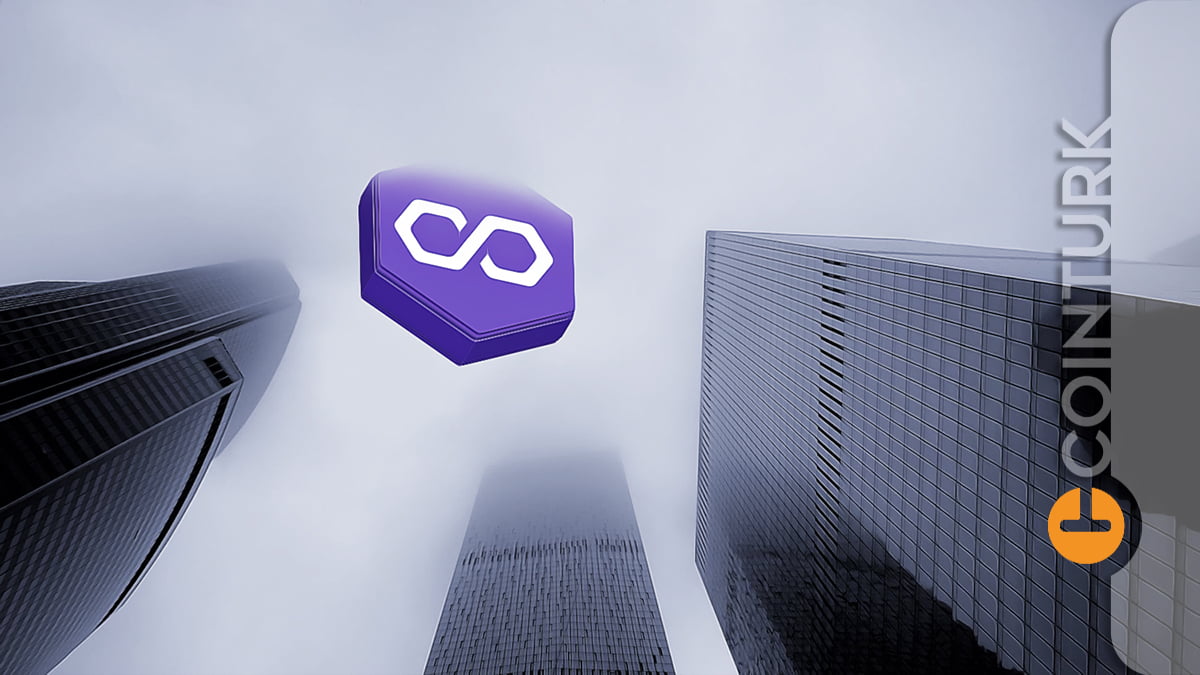Bybit vs Binance: An In-Depth Comparison of Leading Crypto Exchanges
The cryptocurrency trading landscape is constantly evolving, and two platforms that have risen to prominence are Bybit and Binance. These exchanges offer a range of services for crypto enthusiasts, from novice traders to seasoned investors. Bybit, known for its intuitive platform and leverage options, caters to those interested in futures and derivatives trading. On the other hand, Binance, one of the largest and most diverse crypto exchanges, provides an extensive array of trading options and is recognized for its competitive fee structure and user experience.
Both platforms have built substantial user bases and offer various features that include high liquidity, comprehensive security measures, and compatibility with different cryptocurrencies. When comparing Bybit and Binance, potential users consider factors such as fees, available cryptocurrencies, customer support, and the overall reliability of the service. It's important to objectively assess the similarities and differences of each platform to make an informed decision that aligns with individual trading needs and preferences.
Choosing the right exchange is crucial for traders who rely on the platform's stability, responsiveness, and cost-effectiveness to maximize their trading strategies. As such, this comparison between Bybit and Binance is an essential discourse for those seeking to navigate the complexities of cryptocurrency trading in an informed manner. Each platform's nuances and offerings play a pivotal role in shaping a trader's experience and potential success in the dynamic world of crypto.
Overview of Bybit
Bybit, founded in 2018, quickly gained recognition in the cryptocurrency trading space. It is known for its user-friendly platform and competitive trading fees.
History and Background
Bybit was established in March 2018 by Ben Zhou. Since its inception, it has focused on providing a seamless and efficient trading experience to its users, rapidly establishing itself in the realm of cryptocurrency exchanges.
Key Features
- User Interface: Recognized for its intuitive and user-friendly design, suitable for traders of varying experiences.
- Futures Trading: It provides advanced trading options such as futures contracts with leverage.
Supported Cryptocurrencies
Bybit offers a range of cryptocurrencies for trading, with a focus on spot trading features for more than 887 token pairs. While the exchange started with a lean selection of assets, it has expanded its offerings as the market has evolved.
Overview of Binance
Binance has solidified its position as a leading cryptocurrency exchange with extensive features and a wide array of supported cryptocurrencies.
History and Background
Binance was founded in 2017 by Changpeng Zhao (CZ) and has rapidly ascended to become one of the most prominent platforms in the cryptocurrency industry. It distinguished itself with robust growth, agility in regulatory navigation, and the development of a comprehensive ecosystem that includes trading, finance, and blockchain technology solutions.
Key Features
Key features of Binance include:
- Spot & Futures Trading: It allows for trading in multiple formats, including spot and futures markets.
- High Liquidity: Binance is known for its high liquidity, facilitating sizable transactions with minimal slippage.
- Binance Smart Chain: A blockchain platform encouraging the development of decentralized applications and projects.
- Security: It emphasizes security with features like two-factor authentication (2FA) and the Secure Asset Fund for Users (SAFU).
Supported Cryptocurrencies
Binance supports a substantial range of cryptocurrencies, catering to both popular and emerging tokens. As of the given date, it allows trading in:
- Over 1600 Token Pairs: Providing a vast choice for traders looking for variety and opportunities in altcoins.
- Top Cryptocurrencies: Including major cryptocurrencies like Bitcoin (BTC), Ethereum (ETH), Ripple (XRP), and many others.
Comparison of Trading Fees
In a direct comparison, Bybit and Binance present distinct fee structures for their trading services. These differences can significantly impact a trader's cost, depending on their trading style and volume.
Futures Trading Fees
Bybit:
- Maker Fee: 0.01%
- Taker Fee: 0.06%
- The fees can vary based on the user's trading volume, with potential reductions for higher volumes.
Binance:
- Maker Fee: 0.02%
- Taker Fee: 0.04%
- Similar to Bybit, larger traders may receive discounts, resulting in lower fees than the standard rate.
Deposit and Withdrawal Fees
Both platforms allow users to deposit cryptocurrencies without any fees. Withdrawal fees, however, are not standardized and depend on the specific cryptocurrency being withdrawn, with fees generally in line with network costs. Binance and Bybit routinely adjust these fees to match blockchain conditions to ensure fast and efficient withdrawals.
Security Measures
Security is a top priority for both Bybit and Binance. They employ multiple layers of protection to ensure that users' funds and data remain secure.
Bybit Security Features
Bybit implements strict security protocols to safeguard users' assets. Features include:
- Two-Factor Authentication (2FA): Adds an extra layer of security at login.
- Cold Storage: The majority of the digital assets are stored offline, reducing the risk of unauthorized access.
Binance Security Features
Binance is known for its comprehensive security measures, such as:
- SAFU (Secure Asset Fund for Users): An insurance fund that compensates users in the event of a loss.
- Two-Factor Authentication (2FA): Provides an additional step for verifying user identity.
- Cold Storage: Retains a large portion of assets offline.
- Advanced Encryption Technology: Protects sensitive user information and data transfers.
- Whitelisting of Wallet Addresses: Ensures withdrawals can only be made to pre-approved addresses.
User Experience
When assessing user experience on cryptocurrency platforms, both Bybit and Binance have developed interfaces that aim to cater to a wide range of traders, from beginners to professionals.
Bybit Platform Usability
Bybit is recognized for offering a trading experience that accommodates both novice and experienced traders. The platform's design is clean, with an intuitive dashboard that makes navigation and trading straightforward. Users have access to a variety of order types, which are precisely executed, enhancing the usability for active day traders. Key aspects:
- Intuitive Interface: Clear layout and easy-to-use control panel.
- Advanced Trading Options: Comprehensive tools for different trading strategies.
Binance Platform Usability
Binance, on the other hand, presents a robust platform that supports an extensive array of cryptocurrencies and trading pairs. The user interface is polished, providing detailed yet digestible information at a glance. The platform's performance is highly reliable, which is paramount for traders who need real-time data and quick transaction capabilities. Key features include:
- Wide Asset Range: Over 1600 token pairs available.
- High-Volume Trading: Designed to handle large transactions efficiently.
Mobile Trading
Mobile trading has become an essential feature for users who require the flexibility to trade and manage their cryptocurrency portfolios on the go. Bybit and Binance each offer a mobile app reflecting the capabilities of their web platforms.
Bybit Mobile App
Bybit's mobile application provides users with comprehensive trading tools and access to leverage of up to 100x for margin trading. It supports real-time pricing, offers round-the-clock customer support, and maintains a user-friendly interface for trading. The app also incorporates Bybit's robust security systems, giving users peace of mind regarding the safety of their transactions.
Binance Mobile App
Binance's mobile application stands out with a wide array of features that mirror its web exchange services. Users can trade cryptocurrencies, partake in earning passive income, and purchase NFTs within the application. Binance regularly updates its app to ensure a state-of-the-art trading experience, incorporating features such as Margin Trading and providing various order types to cater to the diverse trading strategies of its customers.
Liquidity and Volume
In the arena of cryptocurrency exchanges, liquidity and trading volume are pivotal factors that impact user experience. They determine the efficiency and ease with which traders can enter and exit positions.
Bybit Liquidity
Bybit has established itself with sufficient liquidity to accommodate the needs of most cryptocurrency traders. It maintains a competitive edge with its liquidity levels, ensuring traders can conduct transactions with minimal slippage.
Binance Liquidity
Binance, on the other hand, is renowned for its high liquidity and extensive trading volume, which arguably is unmatched on a global scale. Its market depth across varied pairs enables users to trade significant volumes without significantly affecting the market price.
Customer Support
In the realm of cryptocurrency exchanges, customer support is a crucial element that influences the user experience to a great extent. Both Bybit and Binance provide resources to assist users, though their approaches and effectiveness may vary.
Bybit Customer Service
Bybit employs a dedicated customer service team that users can access for assistance with various issues related to trading and account management. They provide:
- Live Chat Support: Available 24/7 for real-time assistance.
- Email Support: Users can expect responses to queries.
- Help Center: A self-service library containing articles and guides.
Binance Customer Service
Binance, being one of the largest crypto exchanges globally, also offers a variety of support channels which include:
- Help Center: A comprehensive resource with over 100 articles.
- Live Support: Designed to aid users with immediate needs.
- Community Channels: Forums and social media for peer support.
While Binance's customer support is extensive, some users experience challenges when seeking personalized help beyond the provided resources.
Supported Countries
The global reach of cryptocurrency exchanges like Bybit and Binance allows them to serve millions of users across continents. Each platform boasts support for a wide range of countries, ensuring that traders and investors worldwide can access their services.
Bybit Accessibility
Bybit is known to cater to an extensive international audience, providing its trading services to residents in over 100 countries globally. Specifically, it maintains a strong presence in regions such as:
- Asia
- Europe
- Oceania
Countries with restrictions are few, with the platform focusing on compliance and regulatory approvals where it operates.
Binance Accessibility
Binance also commands a vast global user base, with services accessible in more than 180 countries. Binance’s coverage includes, but is not limited to:
- North America
- Europe
- Asia
However, Binance adheres to local regulations and does not operate in countries facing extensive economic sanctions or where cryptocurrencies are banned.
Regulation and Compliance
In the swiftly evolving landscape of cryptocurrency exchanges, regulatory compliance is a paramount issue. Bybit and Binance exhibit different approaches to navigate the regulatory frameworks.
Bybit Compliance
Bybit has been recognized for its compliance efforts, positioning itself to adhere to regulatory demands. It offers a diverse portfolio, including 624 cryptocurrencies, ensuring that its operations align with the guidelines set forth by regulatory authorities.
Binance Compliance
Binance faces more stringent constraints, offering around 402 cryptocurrencies. Its compliance measures are shaped by various global regulations, with the USA's Department of Justice influencing its offerings and policies. Binance has implemented compliance technologies like Ciphertrace and ELLPTIC, and engages in routine audits to maintain a secure trading environment.
Conclusion
Bybit and Binance cater to different user needs within the cryptocurrency exchange sphere. Bybit is highlighted for its strong futures trading platform and appealing to traders with its advanced tools and high liquidity. It supports spot trading on over 800 token pairs and prides itself on a significant daily trading volume.
Binance, on the other hand, is notable for its extensive selection of coins, with more than 1500 token pairs available for trade. Its large daily trading volume overshadows that of Bybit, solidifying its position as a dominant exchange globally.
When it comes to fees:
- Bybit charges a maker fee of 0.025% and a taker fee of 0.075%.
- Binance offers a maker fee of 0.020% and a taker fee of 0.040%, establishing it as the more cost-effective option for those focused on fees.
Both exchanges have developed user-friendly mobile applications which are crucial in today's demanding and mobile-centric world.
Users should consider their individual trading needs, the importance of a wide range of trading pairs, fee structures, and additional tools provided by each platform. One's choice between Bybit and Binance will largely hinge upon these personal preferences and requirements. Both platforms have established their reliability, but as with all investments, due diligence and cautious evaluation are always recommended.
Frequently Asked Questions
What are the differences in futures fees between Bybit and Binance?
Bybit charges a maker fee of 0.025% and a taker fee of 0.075% for futures trading. In contrast, Binance offers a slightly lower maker fee of 0.020% and a taker fee of 0.040%, positioning it as a more cost-effective option for futures traders.
How do scalping experiences compare on Bybit and Binance?
Scalping on Bybit could be considered efficient due to its lower latency and robust API offerings. Binance, while also offering advanced technology, handles a much larger volume of trades, which may affect the speed and efficiency for scalping activities.
What are the key factors to consider when choosing between Bybit, Binance, and KuCoin?
Traders should consider factors such as fee structures, security measures, user interface, liquidity, and the range of available cryptocurrencies. While Bybit and Binance have competitive fees, KuCoin is known for a wide range of crypto assets and user-friendly platform.
Can you highlight the safety measures of Bybit compared to Binance?
Bybit implements a multi-signature cold wallet system, IP whitelisting, and two-factor authentication (2FA) to secure user funds. Binance, on the other hand, offers the Secure Asset Fund for Users (SAFU), 2FA, and advanced data encryption techniques to protect its customers.
What are the benefits of using Bybit over other exchanges like Coinbase or OKX?
One main benefit of using Bybit over others is its no-downtime architecture which enhances trading performance. It also offers a user-friendly interface and a wide range of derivative products. This stands in contrast to Coinbase, which is generally more favorable for novice traders, and OKX, which has a diverse ecosystem of crypto services.
How does futures trading on Bybit differ from that on Binance?
Futures trading on Bybit differs mainly in fee structure and the variety of available instruments. While Bybit offers a simple fee system and focuses on derivative trading, Binance provides a broader array of futures contracts and leveraged tokens, catering to a more diverse set of trading strategies.




